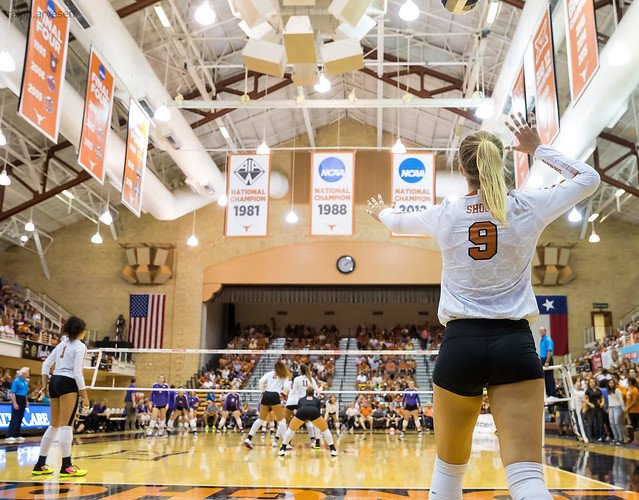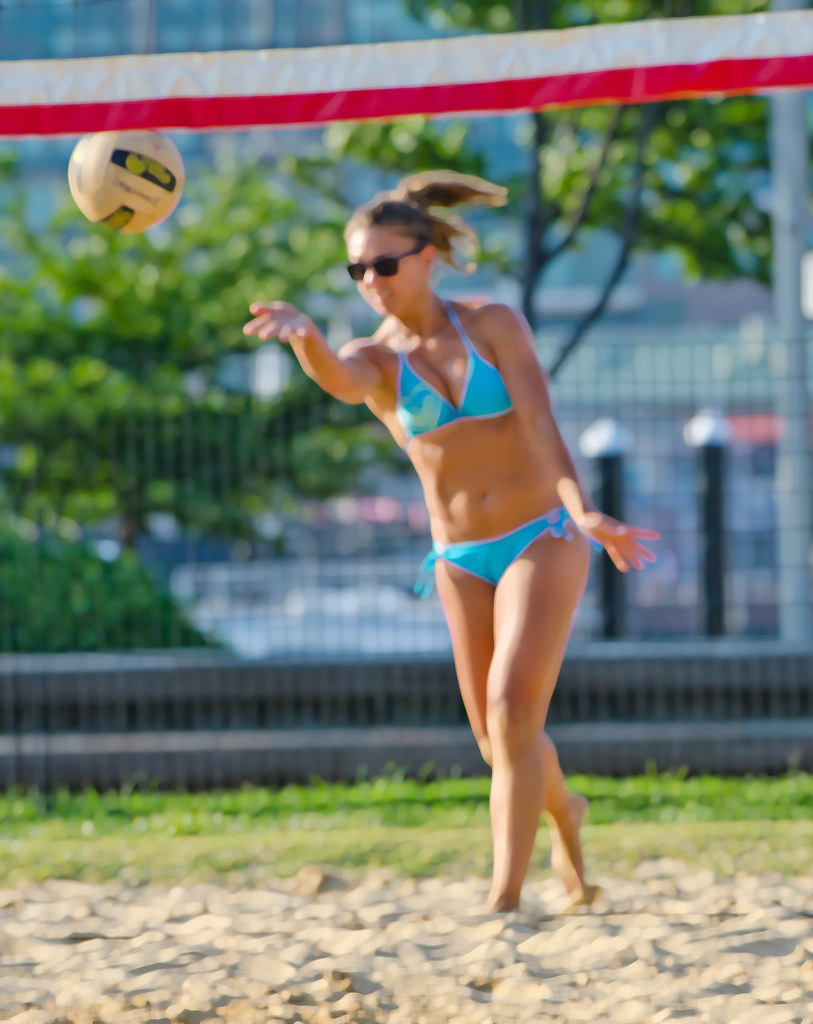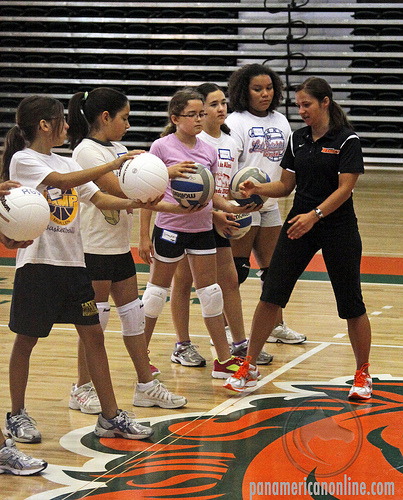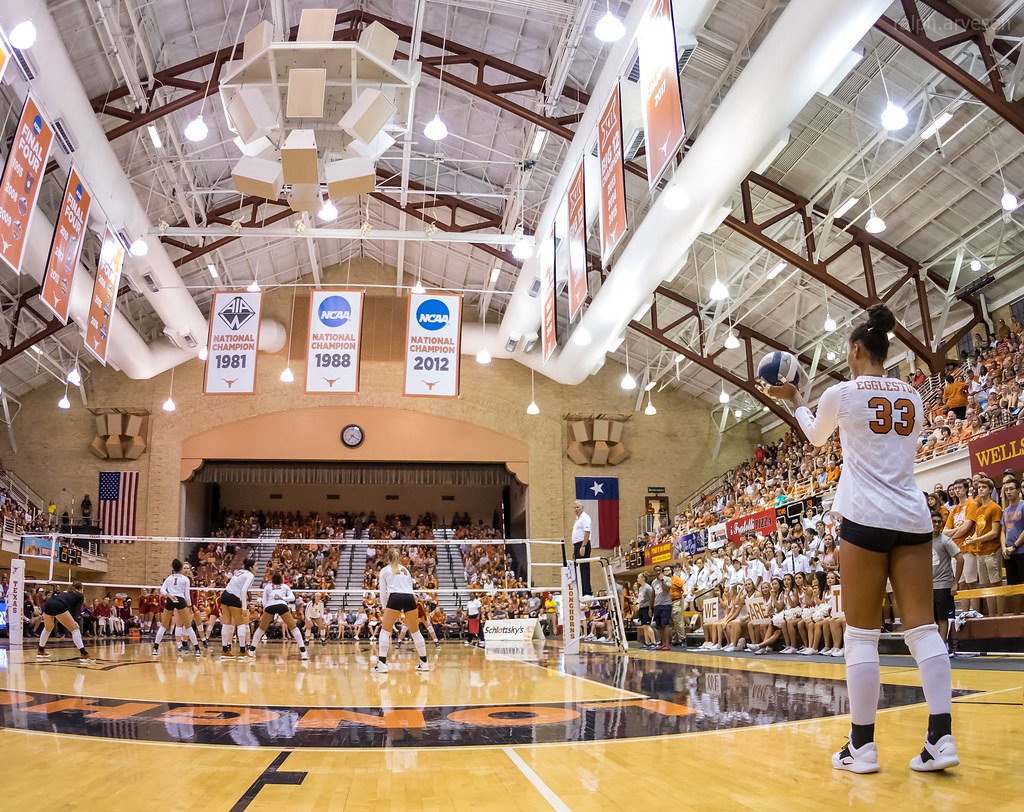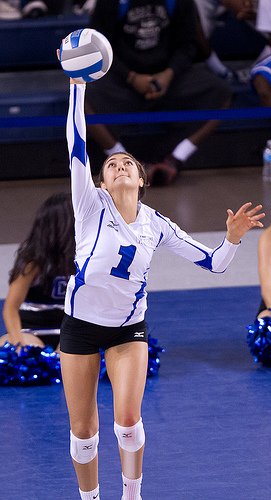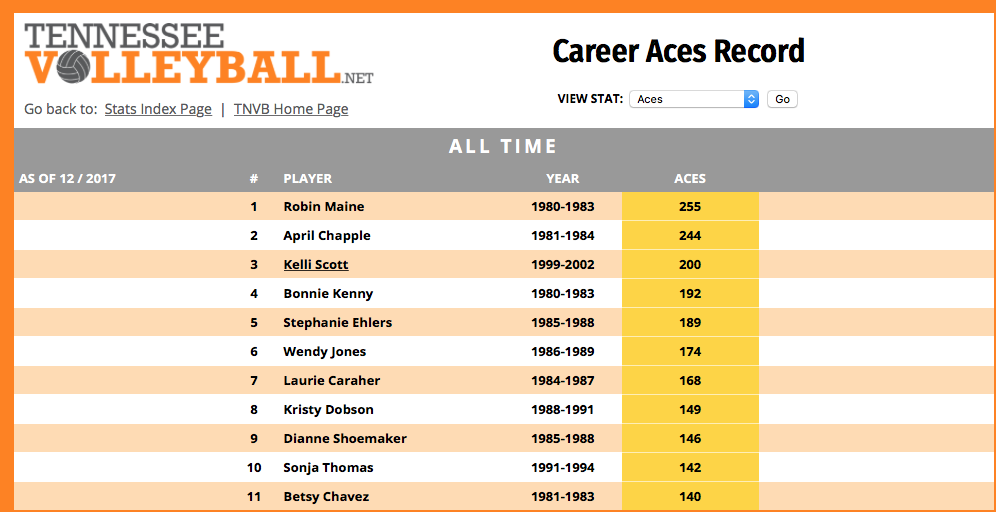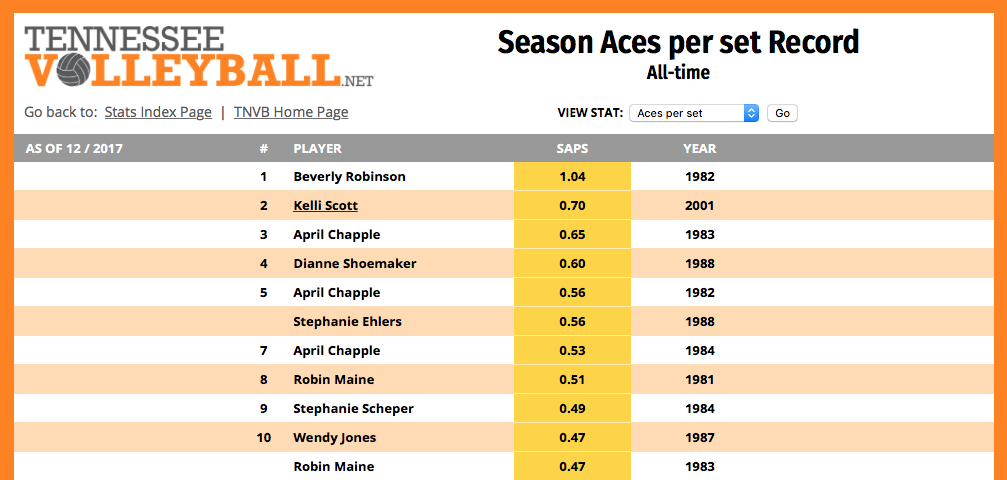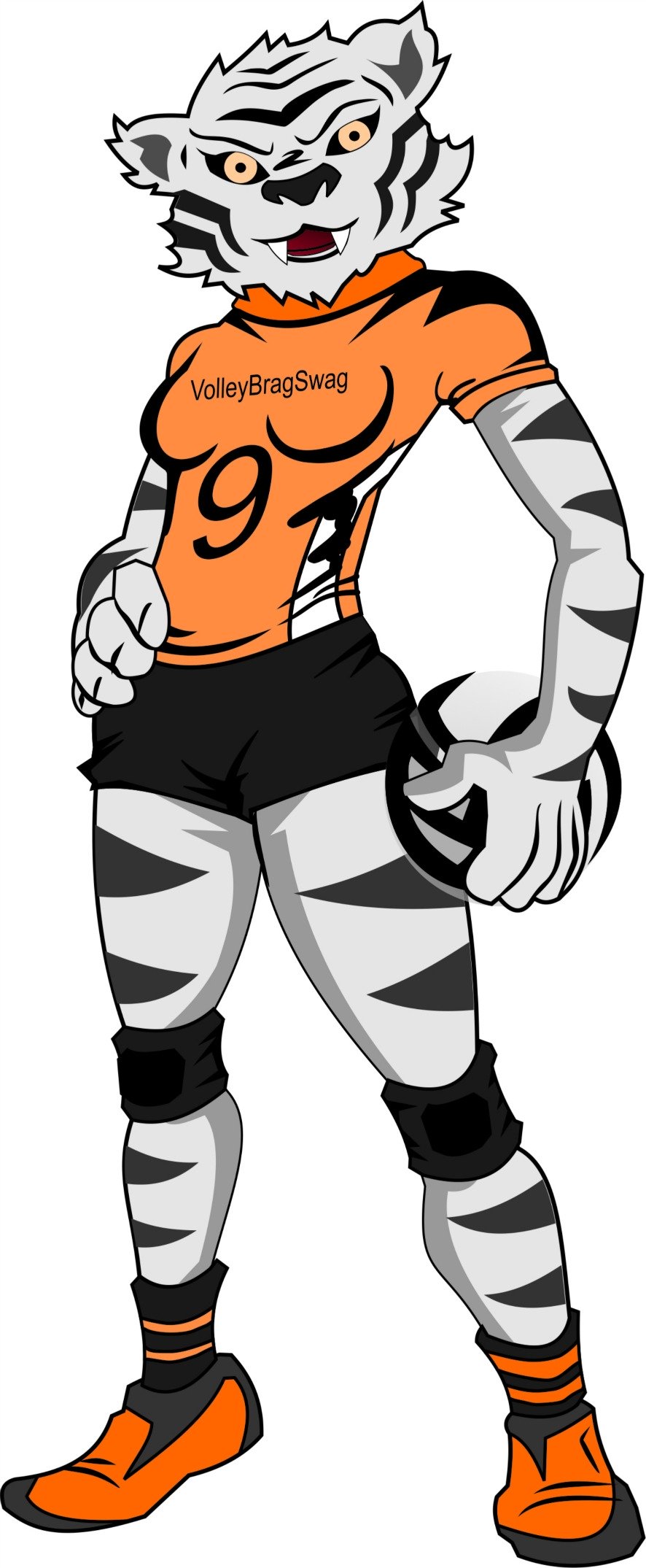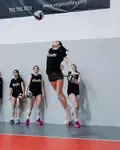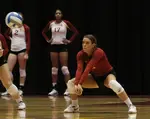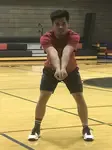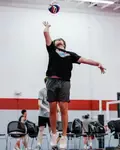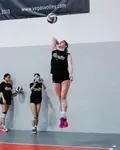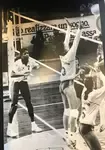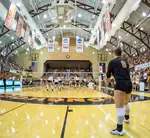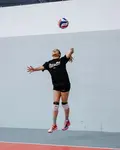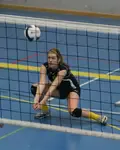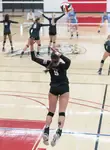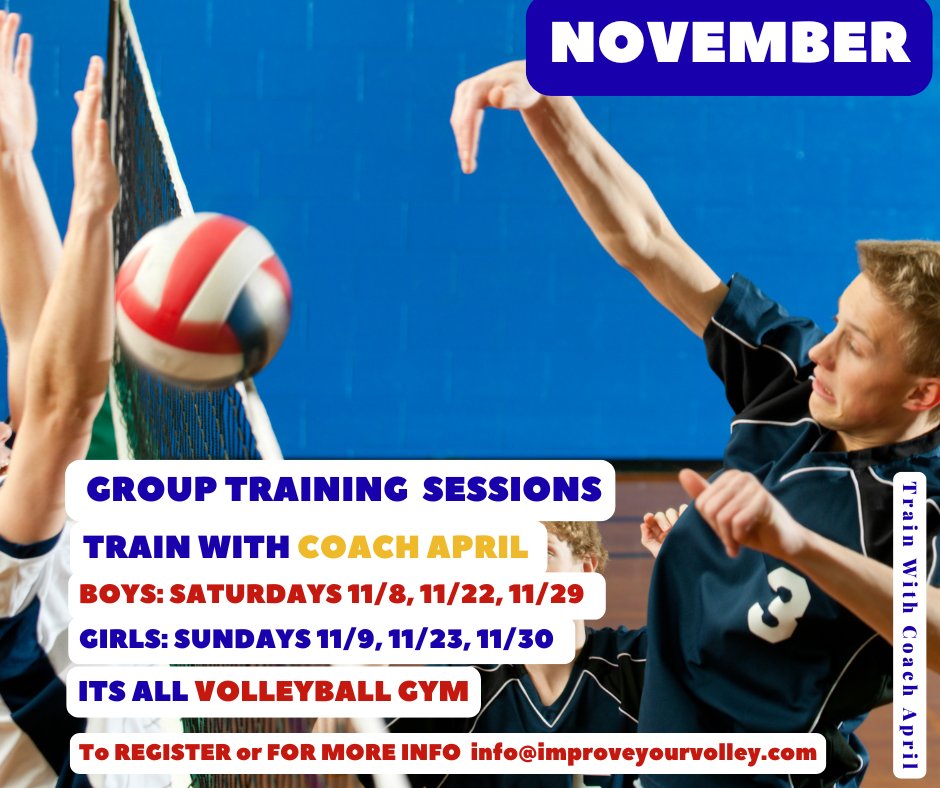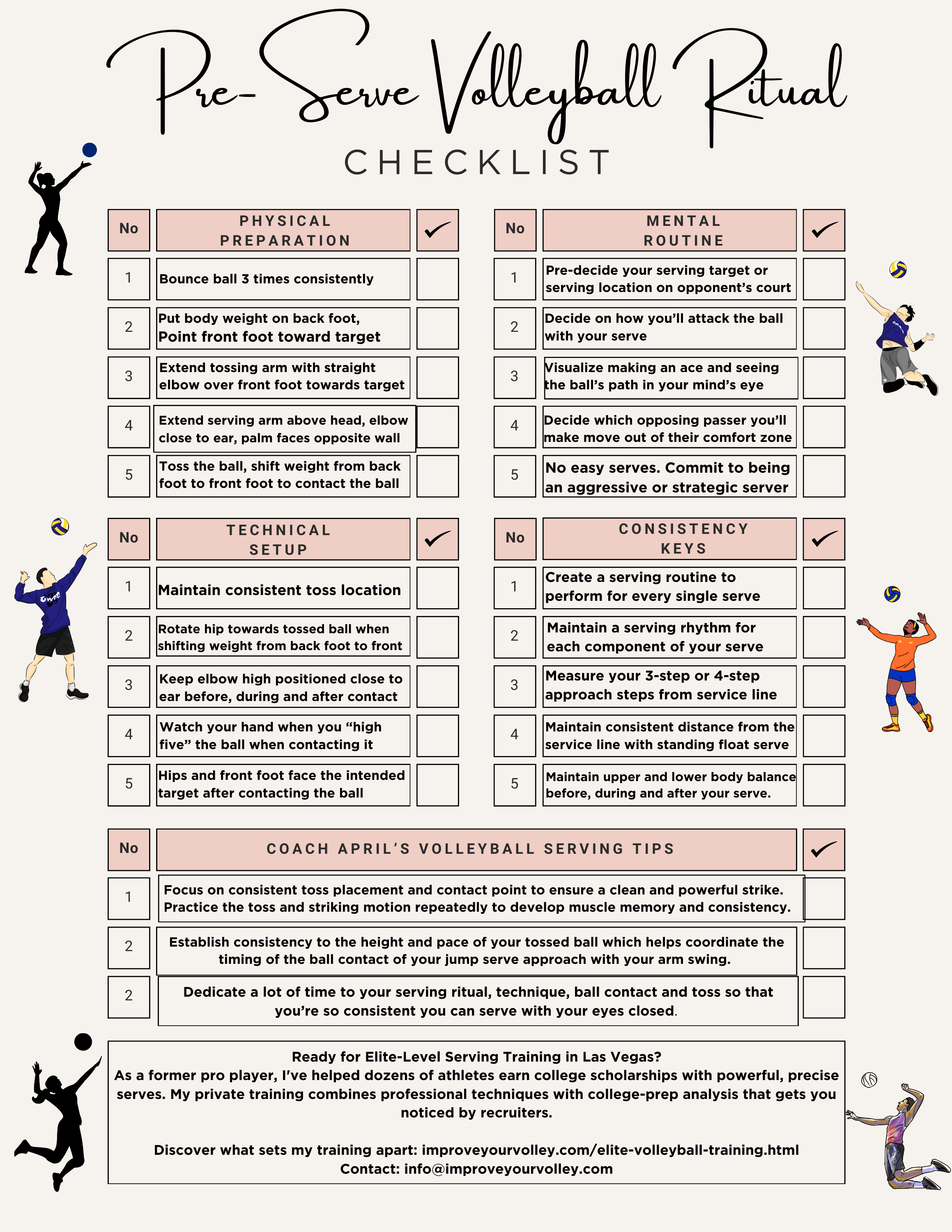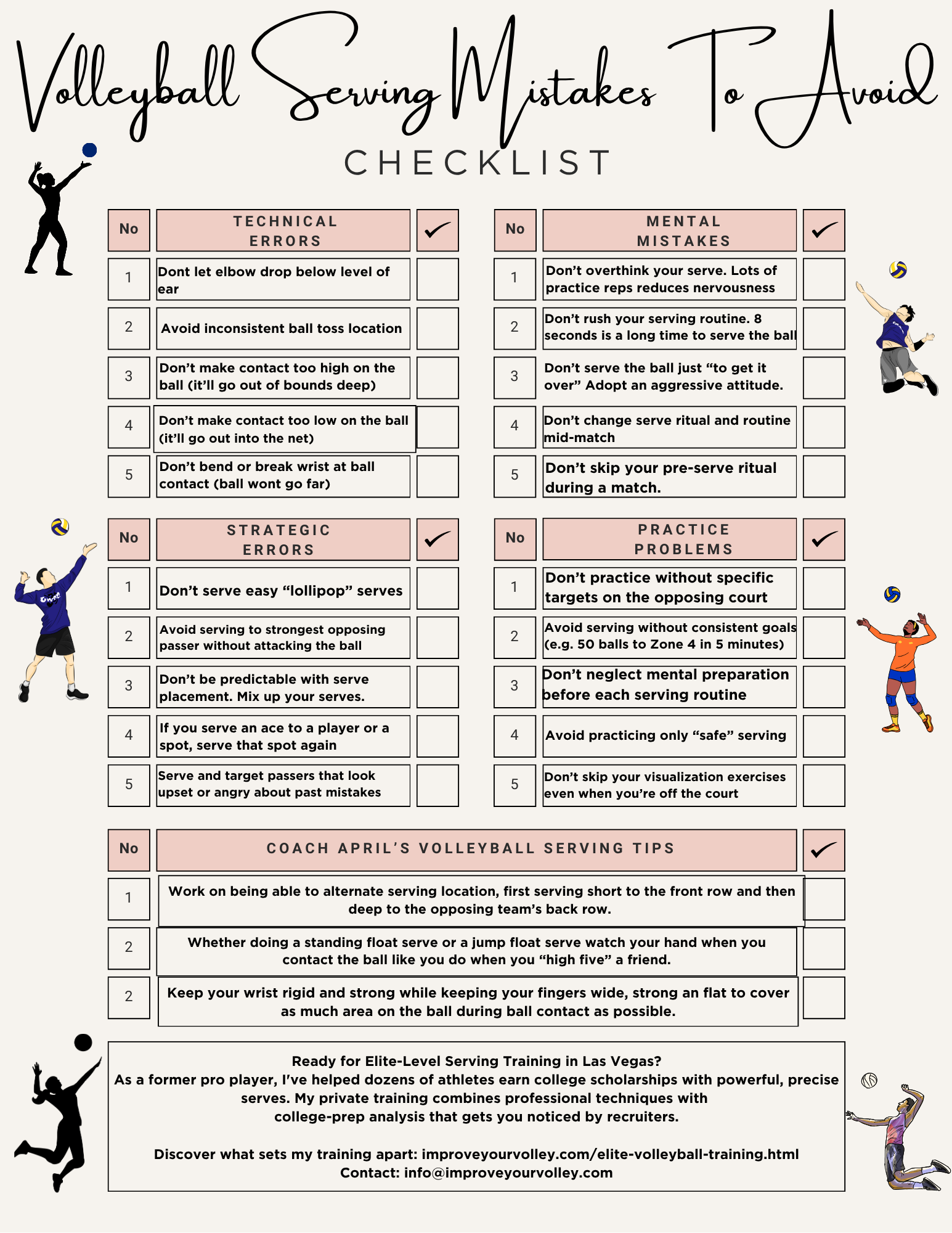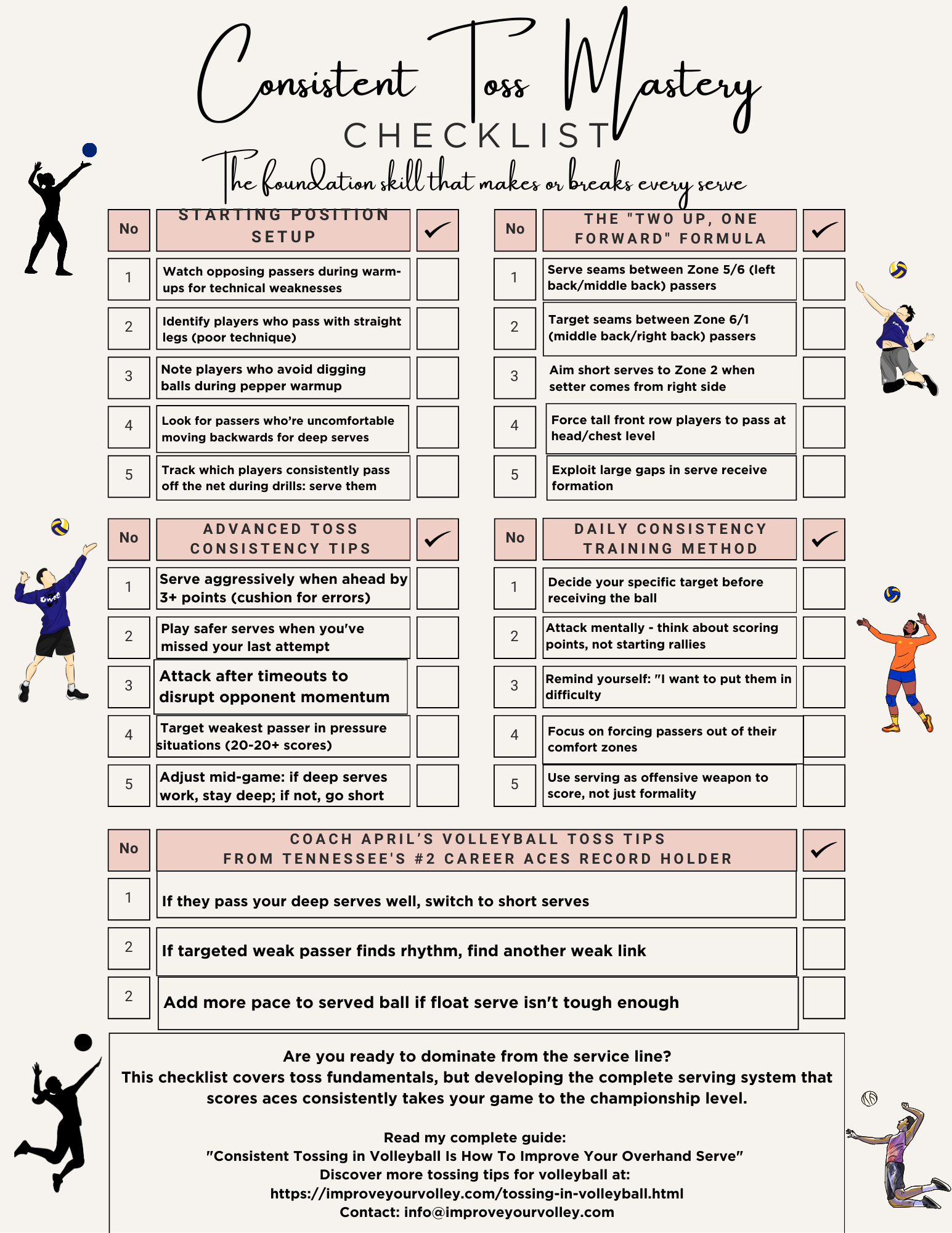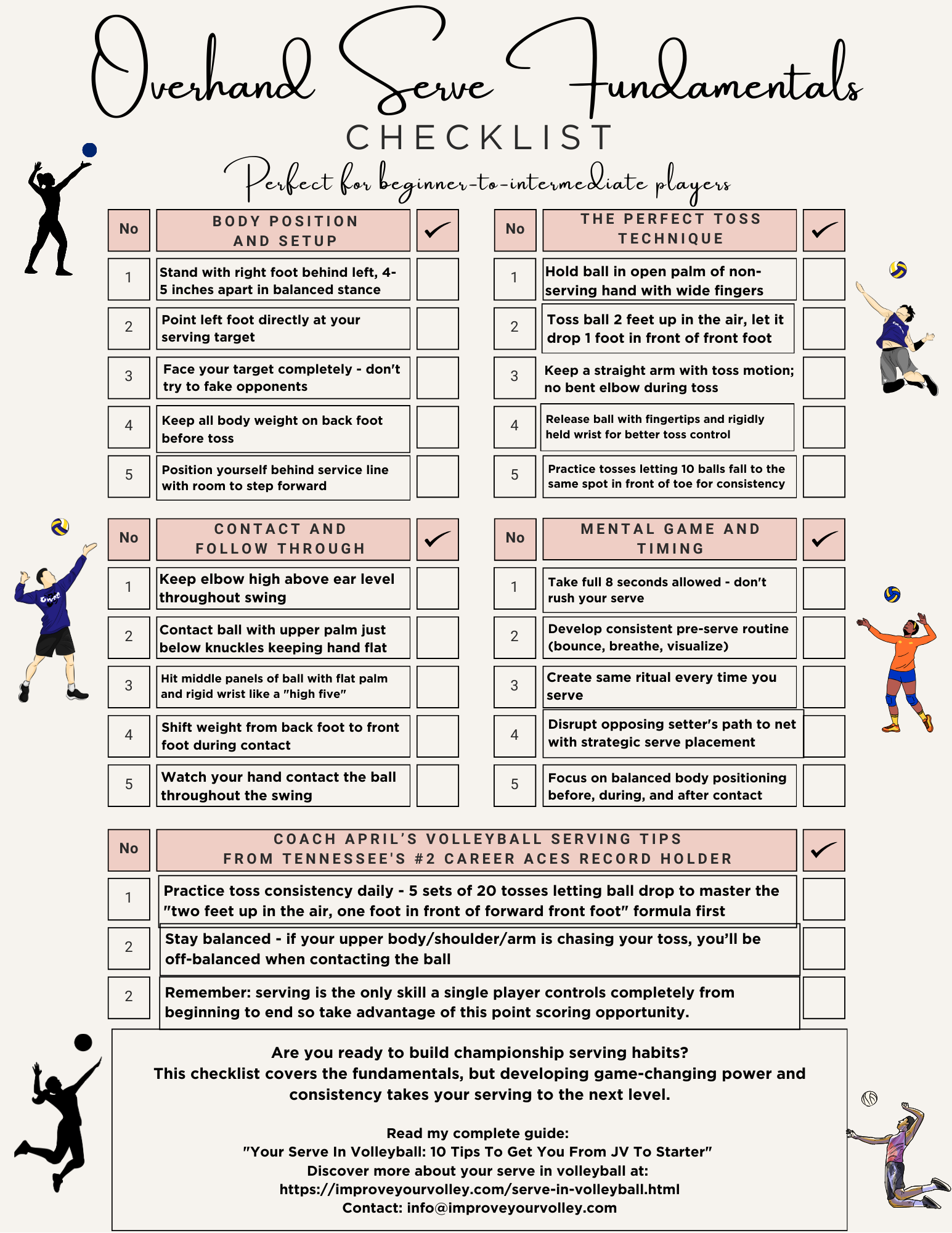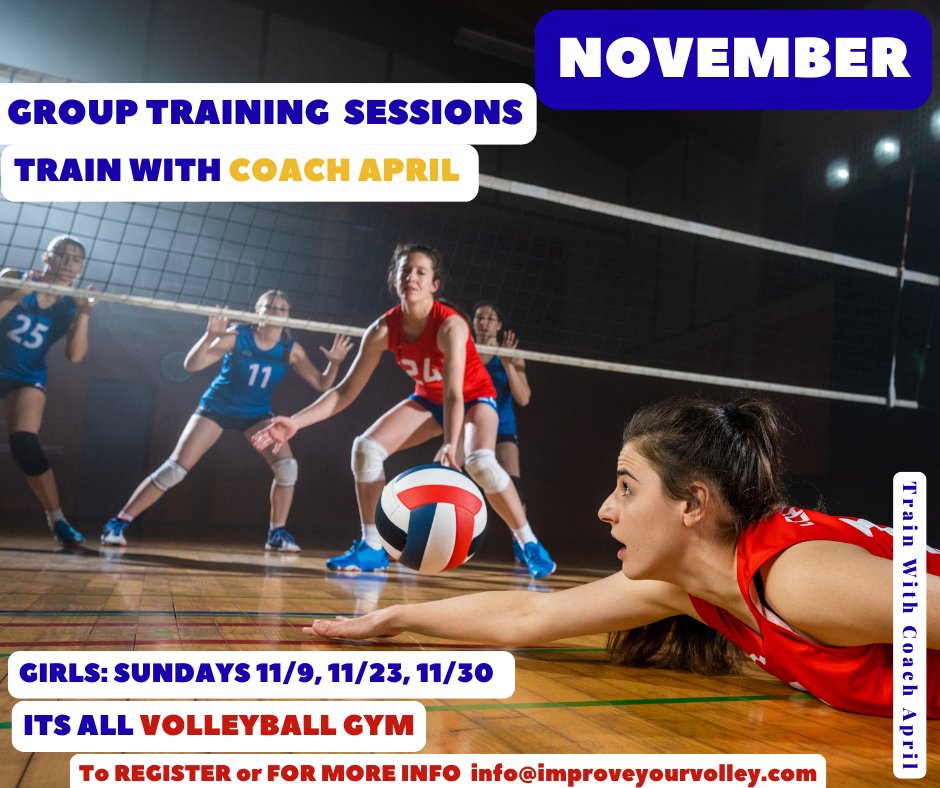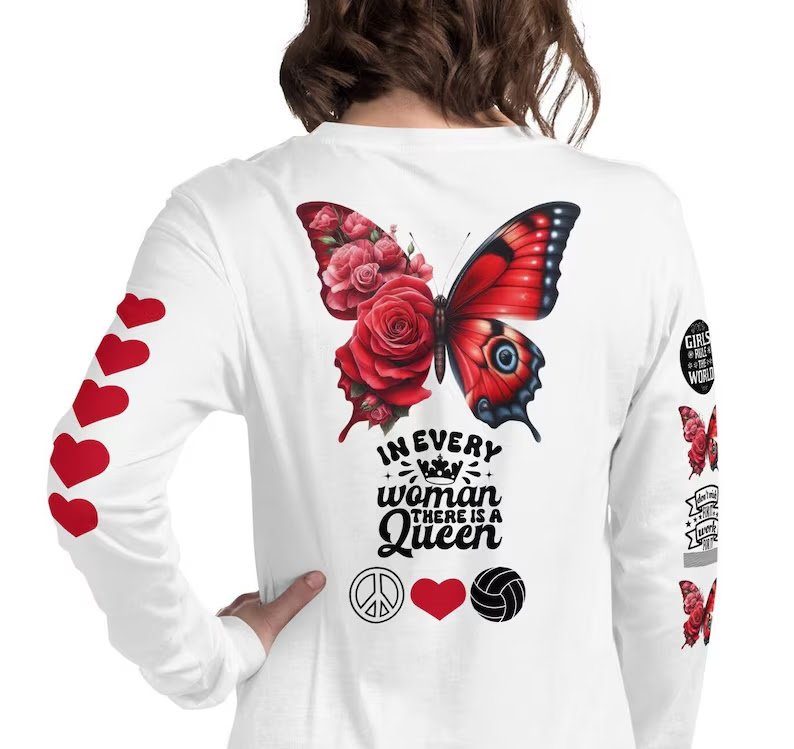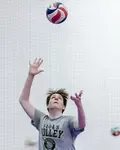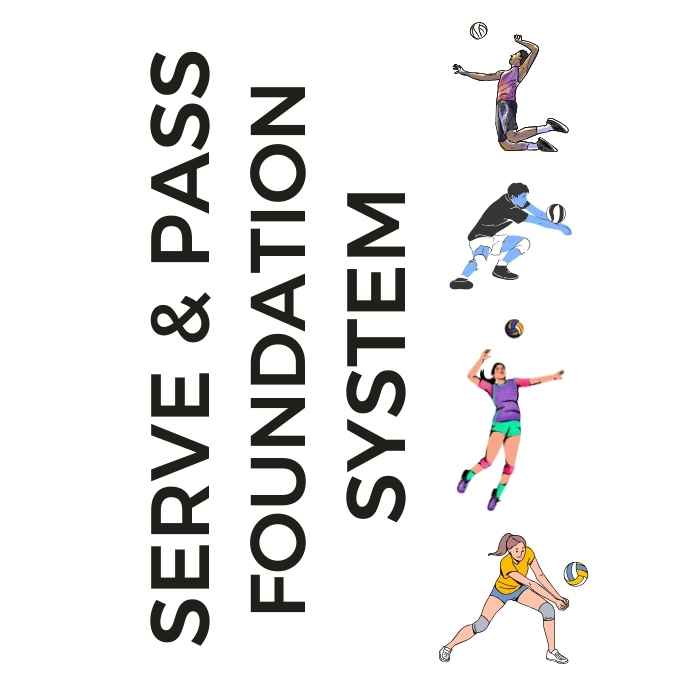
Serve + Pass Foundation System: The Complete Skills Arsenal The two-skill mastery system that transforms inconsistent players into the athletes coaches build their lineups around. Stop Struggling With The Two Most Important Skills In Volleyball!
- Improve Your Volleyball with Coach April
- Learn How To Coach Girls Volleyball
- Types of Serves in Volleyball
4 Types of Serves in Volleyball Overhand, Underhand, Topspin and Jump
There are four types of serves in volleyball varsity players learn. Beginners learn the underhand serve first, then the overhand serve, then topspin and jump serve.
How many types of serves in volleyball are there?
There are three main types of serves that Vegas varsity players should learn how to do.
The underhand, the overhand serve and the jump serve.
- the underhand serve
- the overhand serve - float serve
- the overhand serve - topspin serve
- the jump serve - jump float
- the jump spin - jump topspin
Types of Serves in Volleyball
The Underhand Volleyball Serve
A Step-by-Step Guide
When players first learn the basic skills in volleyball they are usually taught how to underhand serve first.
A Step-by-Step Guide on How To Underhand Serve in Volleyball
The underhand serve is done by
- having the left foot in front of the right foot in a balanced position with your weight on the back foot and toe of the left foot pointed towards where you intend to serve the ball (lefties do the opposite)
- holding the ball in one hand and
- swinging your other arm back keeping it parallel to your body
- then swinging your arm forward with a closed fist or open hand contacting the bottom panels of the ball
- when your arm swings forward you shift your weight from your back foot to your front foot which helps to
- propel the ball across your court and into the opposing team's court using the momentum of the swinging arm to get the ball to travel over the net
Click here to read more about the underhand serve.
Volleyball serve skills: Sophia performs the standing float serve during Fridays Advanced Skills clinic at Vets.
The next two types of serves in volleyball are important because when done correctly they are designed to make it difficult for passers in serve receive to pass the ball easily to their setter.
Types of Serves in Volleyball
The Overhand Serve
Standing Float Serve
With the floater overhand volleyball serve:
- place the ball in your tossing hand - left hand for right handers and right hand for left handers
- with your left hand toss the ball 2-3 feet up in the air in front of your front foot
- with the right hand which is held above your head at a 90 degree angle with your elbow above the level of your ear (lefties do the opposite) use the middle of your open palmed serving hand to contact the middle panels of the ball while
- you keep a rigid wrist, flat hand and widespread stiff fingers
How To Serve Harder in Volleyball
Imagine giving a friend a "high five" keeping your elbow above the level of your ear while you rotate to contact the ball.
Then the ball drops suddenly to the floor making it super difficult for a passer to track and pass the ball to their setter target.
Types of Serves in Volleyball
The Overhand Serve Standing Topspin
The standing topspin serve is another type of overhand volleyball serve.
The primary difference in performing the topspin serve is
a. the wrist isn't stiff, its loose when contacting the ball and bends so the serving hand contacts the top third of the ball.
Contacting the top third of the ball
- creates the forward spin motion and along with
- a quick arm swing motion that "follows through" after contacting the ball so
- that your thumb finishes by your thigh
insures the ball crosses the net with a lot of pace and velocity like a spiked hit.
Example Scenarios: Strategic Use of Volleyball Serve Techniques
Underhand, Overhand, Float and Jump Serves
I think its a great idea to share some scenarios where different types of serves in volleyball are used.
If you understand when and how to use different serve techniques strategically you can learn how to apply your own impact to the game.
Consider the following example scenarios:
1. Scenarios For The Underhand Serve
The underhand serve is often the first type of serve that beginners learn and is used when players are first learning the game or in situations requiring a high level of control, such as accurately placing the ball into a specific area of the opponent's court during serve receive.
As a former pro volleyball player, I learned how to do a high paced precisely located underhand serve after training with several Asian coaches who use the underhand serve in fast paced drills with their players.
When used well, the underhand serve can become a point scoring option that opposing receivers easily underestimate.
2. Scenarios For The Overhand Serve
Once I learned about the overhand float serve I made it my mission in college to score as many points as I could each set or match with a tough serve.
I set many serving and aces records that still stand today.
This is because I practiced for hours just on my serve so I could deliver it at any time to any place on the court in order to make opposing passers have to move out of their base passing position to chase the ball or I'd serve right at them in order to force them to shank the ball so it would be a direct point for my team.
This formula helped me set career and All-Time records that still exist today in the volleyball serve aces category at the University of Tennessee Knoxville.
As an elite private volleyball coach one of my priorities is to produce very tough servers who can serve at very specific spots on the court at varying speeds on command.
Ready to take your serving to the next level?
I help goal-oriented servers who want to expand their serving game master multiple serve types without losing their dominant serve with advanced training that makes your serving highlights stand out to college coaches.
My private training sessions are specifically designed for college-bound athletes who refuse to settle for "good enough" serving.
Limited spots available for serious players only.
Listen to what I tell Addi about being aggressive with her armswing.
Working on her floater in volleyball serve today we did 100 reps of the same serve to the same spot so we could problem solve and work on every body part movement...where things go so when its time to do everything faster...we have smoothed out and understood all the possible wrinkles.
Now I spend a lot of time with my clients on serving drills so they too become known for having consistently tough point scoring serves.
Make sure you work on
- keeping a consistent ball toss in your practice drills,
- a toss with no backspin helps make this serve even more challenging for the opposing passers to get a well-controlled pass
A 12-year old with a tough top spin jump serve!
3. Scenarios For The Overhand Topspin Serve
Simply said, if you want to get the ball over the net fast and hard you choose to use the overhand topspin serve with your jump approach.
The float serve is the finesse serve while
the topspin is the power serve.
-April Chapple
Don't believe me? Watch how Siena does it?
Watch how deadly Vegas Volley 17s outside hitter Siena Novak's topspin serve is
The topspin serve is used when you want to generate power and add spin with a downward trajectory once the ball crosses the net to the serve.
Even younger players are getting really good at including the topspin serve in their toolbox of skills they can use during their match when they need to start a rally after the ref blows their whistle.
This topspin serve places increased pressure on the passers that're on serve receive, because the ball is coming over the net at a super fast speed so making it more difficult to move to the ball in order to execute a clean pass.
4. Scenarios For The Jump Serve
Ari, my private training client is a Tstreet Las Vegas 16s Bree libero who's been training with me for three years and we're working on her aggressively consistent jump float serve to the cross court Zone 5 corner.
The jump serve is the second type of serve that most young players learn during their playing career.
Serving in Volleyball Definition and Words For The Volleyball Service:
The Floater serve-a type of serve made by contacting the middle of the flat hand to the middle of the ball which once the ball crosses the net makes the ball float and dip making it harder for an opposing player to pass the ball
Combining the three or four step approach with the standing float serve technique is what players learn how to coordinate in practice...specifically learning how to put the timing together with their upper body work with their lower body approach...
The jump serve is a dynamic and powerful serve technique.
Practicing the art of these serves (for me serving is so important that I like to call it an 'art') builds your confidence.
It is used by more advanced players who can generate high speeds, lots of pace and velocity, making it difficult for the opposing team to pass which increases the potential scoring opportunities.
By
- carefully assessing the game situation,
- understanding opponent weaknesses, and
- considering your team's strengths,
you can strategically choose the best serve technique in order to gain a competitive advantage.
Ready to take your serving to the next level?
I help varsity athletes who rely on power serves add next-level strategic serving without sacrificing their ace count through proven techniques that showcase elite serving IQ on recruitment videos.
My private training sessions are specifically designed for college-bound athletes who refuse to settle for "good enough" serving.
Limited spots available for serious players only.
Reddit Serve Questions
Answered by Coach April
Okay so once or twice a month I scroll through the Reddit volleyball forums, so I can see what passionate debates are going on about the various types of serves players are having trouble with - which to learn first, what's most effective, and how to add power or strategy.
The problem?
Most advice comes from
- 'what worked for me'
instead of
- 'what works for most.' or
- 'what is the most effective that consistently scores aces and/or direct points
Let me share my professional insights on Reddit's most heated serving discussions.
Which serve should I learn first - jump or float?
*Reddit can't agree. But here's my take based on personal and professional experience*
The serve that has the most upper body and lower body components to master and for you to learn to get control of is a jump serve with any kind of top spin.
Why do I say that?
Because you have to learn
- which serve step approach works for you and you have a four step, three step or two step approach to choose from
- how much of a wrist flick works in order to give you the spin speed you want and
- in which direction of wrist flick do you need so the ball spins in a very specific direction - either front spin, back spin or side spin so when you contact the ball it spins in a very difficult direction that's hard for the passer to read and prepare for
- about a toss with a very consistent 'two-step' distance in front of you so when you take your last two steps to the ball ..it remains in front of you so you can see the ball along with the areas of the court you intend to serve to
My advice would be to learn the components of the standing float serve first because there are a lot less elements that you need to focus on with upper body technique and lower body technique. . Period.
The standing float serve is a lot more reliable, because your feet are on the ground in a balanced stance which is effective at all levels, and this type of serve builds the foundation for other serves.
I've seen D1 players win matches with just a nasty but high speed and accurately placed standing float serve aimed at the right seam between players, the right player wo isnt concentrating or the right open spot on the court that no one is covering.
Is the jump serve worth the risk?
*The Great Reddit debate..please let me settle it:*
If you've mastered the basics but want to add a serve that consistently scores aces, the topspin serve is your next weapon. Watch as my Vegas Volley Boys 18s work on their volleyball topspin serve in one of our practices.
Only if you can land 7/10 in practice consistently. Otherwise, an aggressive standing or jump float serve scores more points than a jump spin serve of any kind ( Im going to add -- done by a high school player) in the net.
Your goal should be to build consistent reps of getting your float serve to the intended target and In the court.... before you start adding power.
How do I add more spin to my topspin serve?
Ready to take your serving to the next level?
I help goal-oriented servers who want to expand their serving game master multiple serve types without losing their dominant serve with advanced training that makes your serving highlights stand out to college coaches.
My private training sessions are specifically designed for college-bound athletes who refuse to settle for "good enough" serving.
Limited spots available for serious players only.
*Beyond Reddit's "snap your wrist more":*
Do You Follow Me on Pinterest?
Follow me on Pinterest Volleybragswag to improve your game even faster!
I share alot of individual, partner and easy-to-do volleyball serving drills we do in class with my followers.
Many of these volleyball practice drills you can do at home by yourself or try at your next practice with your teammates.
If you're a B team or JV player trying to make varsity next year...your goal should be to complete 1000 reps a day of at least three of the basic skills on your own...volleyball passing, serving and setting should be at the top of the list.
Types of Serves in Volleyball
Where Do you Go From Here?
Your three options are:
- You can learn more about Basic Volleyball Skills by visiting the related links below.
- Follow the suggested reading on our Sitemap page Learning How To Play (Sitemap)
- Or visit the pages in the How to Play Volleyball section in the drop down menu at the top of the page to get started.
- Before leaving this page Say "Hi" to Miss Tattoo the Tiger wearing the #9 jersey below. Miss Tattoo is the starting defensive and serving specialist for the All Beast VolleyBragSwag All Star team.
Meet Tatoo the Tiger, Serving Specialist on VolleyBragSwag's All Beast Team
If your athlete struggles with consistent serve receive, gets subbed out, or is overlooked for playing time—this is the fix you’ve been looking for.

Struggling with passing consistency?
I help talented passers tired of getting pulled from games because of inconsistent serve receive skills BUILD passing confidence without expensive private lessons using the same 3-step system that's helped dozens of my athletes get recruited.
Download my eBook for $17.99 and start building the passing confidence that keeps you on the court—and gets you seen by college coaches.
From Lady Vol to Legend: Coach April Produces Powerful Passionate Players...is that you?
What Are You Looking For?
Click to Download Your Pre Serving Ritual Mastery Checklist pdf:
🎯Volleyball Pre Serving Ritual Guide -
Players! Learn How To Transform Your Serve from Weak to Weapon
Click to Download Your Parent's Volleyball Serving Checklist pdf
🎯Parent's Volleyball Serving Checklist Guide
Parents! Help Your Player Develop Championship Serves (Even If You've Never Played)

Hi there!
Thanks for stopping by. Hope you learned something today that will help you reach your volleyball goals.
Be sure to subscribe to my email newsletter so you can learn more each week!
Stay strong! Stay motivated!
-Coach April

SUSCRIBE to my email newsletter below!
 Click to learn more about the weekly volleyball classes and clinics or email info@imrpoveyourvolley.com for information
Click to learn more about the weekly volleyball classes and clinics or email info@imrpoveyourvolley.com for informationCongratulations to my seven Boys-18s Vegas Volley club players who played in two state championship finals yesterday, the 3A and 5A State champinship finals at Sunrise Mountain High School.
TOURNAMENT CHAMPIONS!
A-1 Vegas Volley VBC
In It To Win It Tournament
May 2 - 4, 2025 Tournament
Gold Medalists
18s Premier Division
Vegas Volleyball's Unsung Heroes: Celebrating Moms with Peace Love Volleyball Shirts
Ready to energize your volleyball mom journey?
Subscribe to my 'Producing Powerful Passionate Peaceful Players' email list above on ImproveYourVolley.com.
You'll receive energy-boosting tips, exclusive insights from me, Coach April Chapple on maintaining momentum in volleyball.
Let's power up the Vegas volleyball scene together!
Recent Articles
-
The Volleyball Toss How Consistent Is Your Ball Toss Before You Serve?
Dec 07, 25 12:29 AM
The volleyball toss for the overhand serve needs to consistently be two feet up in the air and one foot in front of front foot which puts the ball in front of your serving arm. -
Shop Small: Real Volleyball Training With + Results From A Real Coach
Dec 03, 25 10:30 AM
Support a woman-owned business. Get training from a former elite pro with 13+ years coaching experience. Ditch the big box store--invest in proven results. -
How to Jump Float Serve: 3 Pro Volleyball Player's Secret Serving Tips
Nov 28, 25 08:34 PM
Why do college players rely on the jump float serve? It combines power with unpredictable movement. Learn how to jump float serve like the pros in this guide.
